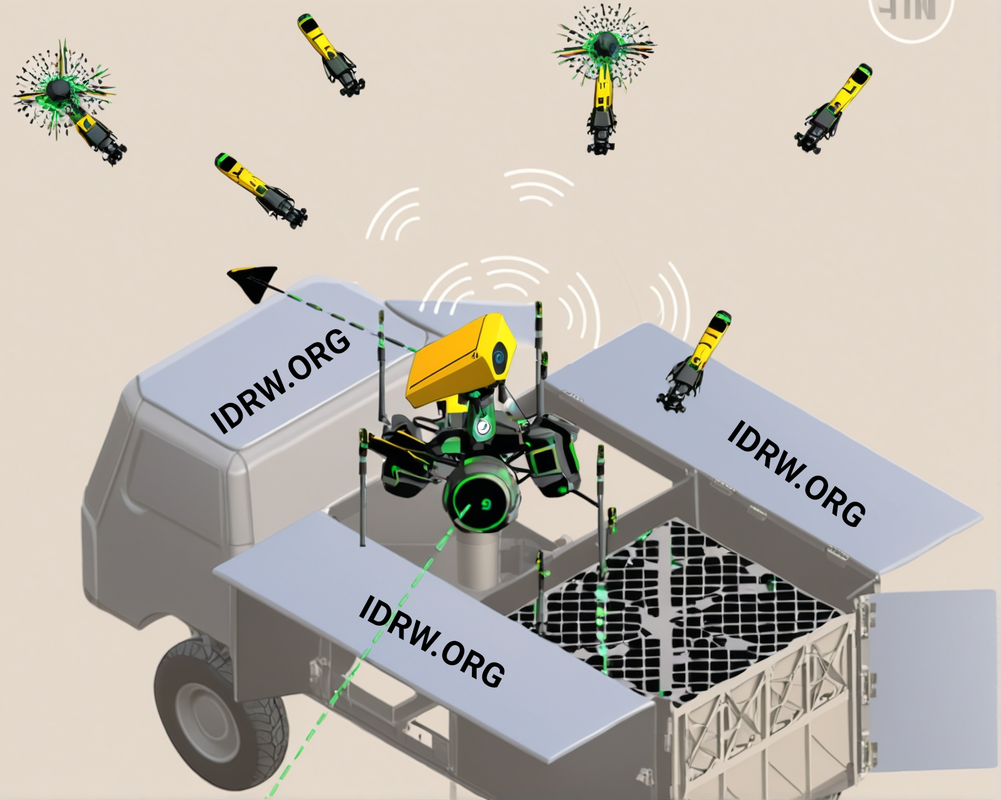SOURCE: AFI

The Indian Air Force (IAF) has issued a clarion call for the development of an advanced autonomous interceptor system to counter the growing threat posed by long-range drones to vital installations across the country. In a recent statement, the IAF highlighted the urgent need for a cost-effective and efficient solution to detect, identify, and neutralize hostile drones, particularly in light of their increasing use in modern warfare. The proposed system, a tube-launched counter-swarm drone, is envisioned as a versatile platform capable of being deployed from helicopters, ground vehicles, or static installations, offering a robust defense against drone threats at a minimum operating altitude of 8,000 feet above mean sea level (AMSL).
The IAF’s concerns stem from the evolving nature of aerial threats, with long-range drones emerging as a significant risk to critical infrastructure such as air bases, radar stations, power plants, and other strategic assets. “Long-range drones are a threat to vital installations,” the IAF stated, noting that traditional methods of interception—such as using missiles—require large infrastructure and come with a high per-weapon cost. This approach is not only resource-intensive but also impractical for countering the sheer volume of drones that could be deployed in a swarm attack, a tactic increasingly employed by adversaries to overwhelm defenses.
To address this challenge, the IAF is seeking an autonomous interceptor system that can loiter over a designated area, waiting for an incoming drone threat, and then engage it with precision. The counter-swarm drone system will be tube-launched, allowing for rapid deployment from multiple platforms, including helicopters for aerial operations, ground vehicles for mobile defense, and static installations for fixed-site protection. This flexibility ensures that the system can be integrated into a variety of operational scenarios, providing comprehensive coverage for India’s vast and diverse terrain, from the plains to high-altitude regions like Ladakh, where the minimum operating altitude of 8,000 feet AMSL is a critical requirement.
The proposed system is designed to be fully autonomous, capable of detecting, identifying, and destroying hostile drones without human intervention. It must be equipped with advanced sensors to home in on enemy drones, ensuring accurate targeting even in complex environments. The IAF has left the method of neutralization open to innovation, stating that it could involve a “hard kill”—such as a direct impact or explosive payload—or any other suitable technology for drone neutralization, such as electronic warfare (EW) techniques like jamming or laser-based systems. This flexibility allows developers to explore a range of solutions, from kinetic to non-kinetic, to achieve the desired effect.
A key feature of the system is its ability to integrate seamlessly with existing IAF systems when required. This includes compatibility with the IAF’s Integrated Air Command and Control System (IACCS), which provides a unified air defense picture by networking radar, sensors, and weapon systems across the country. The counter-swarm drones must be able to operate as part of this broader ecosystem, sharing real-time data and receiving commands to ensure coordinated defense operations. This integration is crucial for maintaining situational awareness and enabling rapid response to drone threats, particularly in scenarios involving multiple simultaneous attacks.
The IAF’s push for a counter-swarm drone system reflects a broader global trend in military technology, where drones have become both a tool and a threat. The proliferation of low-cost, commercially available drones has democratized access to aerial capabilities, allowing even non-state actors to deploy them for reconnaissance, surveillance, or direct attacks. High-profile incidents, such as the 2019 drone attack on Saudi Arabia’s Aramco oil facilities, which disrupted global oil supplies, and the use of drones in the Russia-Ukraine conflict, have underscored the need for effective counter-drone technologies. Closer to home, India has faced drone-related threats along its borders, with reports of Pakistani drones dropping weapons and narcotics in Punjab and Jammu & Kashmir, and Chinese drones conducting surveillance along the Line of Actual Control (LAC).
The IAF’s current counter-drone measures, which include radar detection, surface-to-air missiles, and anti-aircraft guns, are effective against larger aerial threats but less so against small, agile drones that can operate in swarms. The high cost of missile-based interception—often running into millions of rupees per shot—makes it an unsustainable option for countering large numbers of drones. Moreover, the infrastructure required to support missile systems, such as launchers, radar, and command centers, is not easily deployable in remote or high-altitude areas, where many of India’s vital installations are located.
The proposed tube-launched counter-swarm drone system addresses these challenges by offering a scalable, cost-effective solution. By loitering over a vital installation, the system can provide persistent protection, engaging threats as they emerge without the need for constant human oversight. Its ability to be launched from multiple platforms enhances its operational flexibility, allowing the IAF to deploy it in a variety of scenarios, from defending forward air bases in Ladakh to protecting critical infrastructure in urban centers. The minimum altitude requirement of 8,000 feet AMSL ensures that the system can operate effectively in high-altitude regions, where many of India’s strategic assets, such as airfields and radar stations, are situated.
NOTE: AFI is a proud outsourced content creator partner of IDRW.ORG. All content created by AFI is the sole property of AFI and is protected by copyright. AFI takes copyright infringement seriously and will pursue all legal options available to protect its content.